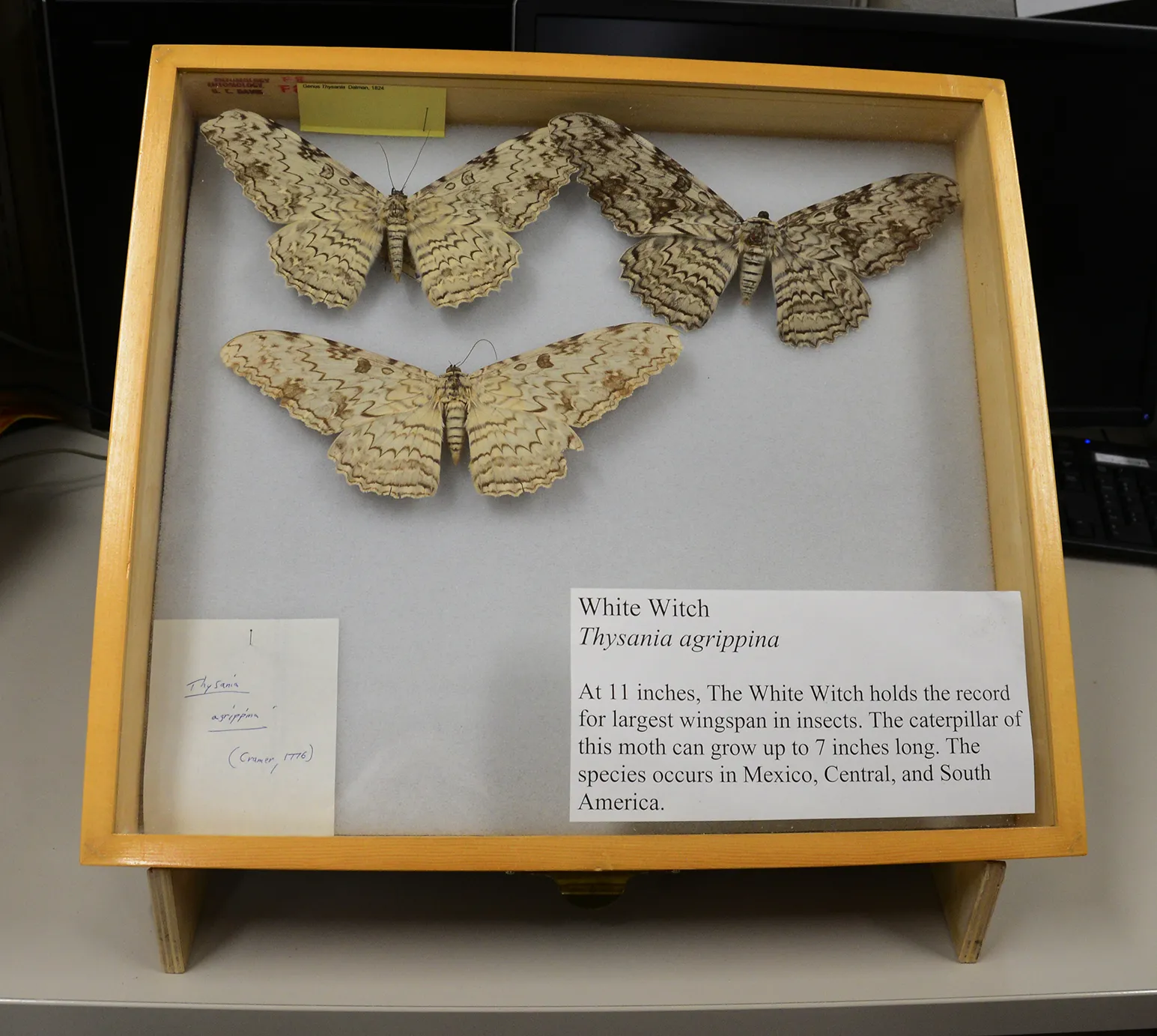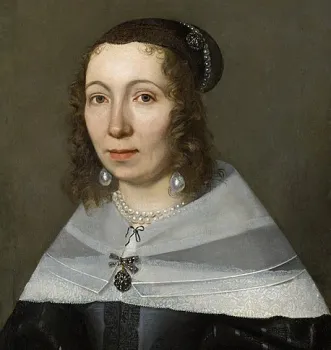
It's not Halloween yet, but you'll see a "witch" at the annual Moth Night hosted by the Bohart Museum of Entomology on Saturday, July 12.
A White Witch, that is.
It's the legendary moth, Thysania agrippina, from the family Erebidae. It's also called the Ghost Moth, Great Gray Witch and Great Owlet Moth. It's huge. Its wingspan is considered the longest of all the world's insects with a wingspan of 12 inches.
The range of the White Witch? From Mexico to South America. It's also strayed as far north as Texas.
The Bohart Museum Moth Night, free and family friendly, is set from 7 p.m. to 11 p.m. at its facility in Room 1124 of the Academic Surge Building, 455 Crocker Lane, UC Davis. It will include an outdoor blacklighting demonstration (scientists will set up a white sheet and a ultraviolet light to see which species of moths and other night-flying critters will be drawn to the light); a live petting zoo (Madagascar hissing cockroaches, walking sticks and other arthropods), and the huge moth collection, which include White Witch specimens.

Wikipedia tells us the White Witch was first described by German entomologist, naturalist and scientific illustrator. Maria Sibylla Merian (1647-1717) in her 1705 publication Metamorphosis insectorum Surinamensium. Pieter Cramer provided the formal description of the species in 1776.
Merian depicted it in 1702-03 in a well-known painting titled "Branch of the Gumbo-Limbo Tree with White Witch Moth."
How did the White Witch derive its name? One story indicates a group naturalists, unsucessfully fired pellets to "bring it down," failed, and called it "an unkillable witch."
The White Witch is just one of the specimens that open house visitors will see, says Jeff Smith, curator of the Lepidoptera collection, a worldwide collection estimated at half-a-million moths. "Species of moths in the world (160,000) outnumber butterflies (17,500),"so we likely have about that ratio in our research collection."
The Bohart's Lepidoptera collection is considered "the gold standard" of collections. Professor Paul Opler (1938-2023) of Colorado State University, an international authority on Lepidoptera and author of noted books on butterflies and moths, was so impressesd with the Bohart collection that he emailed Smith: “I consider the Bohart Lepidoptera collection to be The Gold Standard to which we all should aspire.”
Smith received the highly competitive Friend of the College Award in 2015 from the UC Davis College of Agricultural and Environmental Sciences.

The Bohart Museum is located in Room 1124 of the Academic Surge Building, 455 Crocker Lane, UC Davis. Founded in 1946 by Richard "Doc" Bohart, a noted UC Davis entomologist, it now holds a worldwide collection of eight million insect specimens, gathered under the tenure of UC Davis Distinguished Professor (now emerita) Lynn Kimsey, who serve the Bohart director for 34 years.
Professor Jason Bond, the Evett and Marion Schlinger Endowed Chair of Insect Systematics and the executive associate dean of the UC Davis College of Agricultural and Environmental Sciences, succeeded Kimsey as director in February 2024.
In addition to its worldwide insect collection and live petting zoo, the Bohart Museum houses an insect-themed gift shop stocked with T-shirts, hoodies, jewelry, books, posters and insect-collecting equpment.
More information about the Bohart Museum is available on its website at https://bohart.ucdavis.edu/ or by contacting bmuseum@ucdavis.edu.

